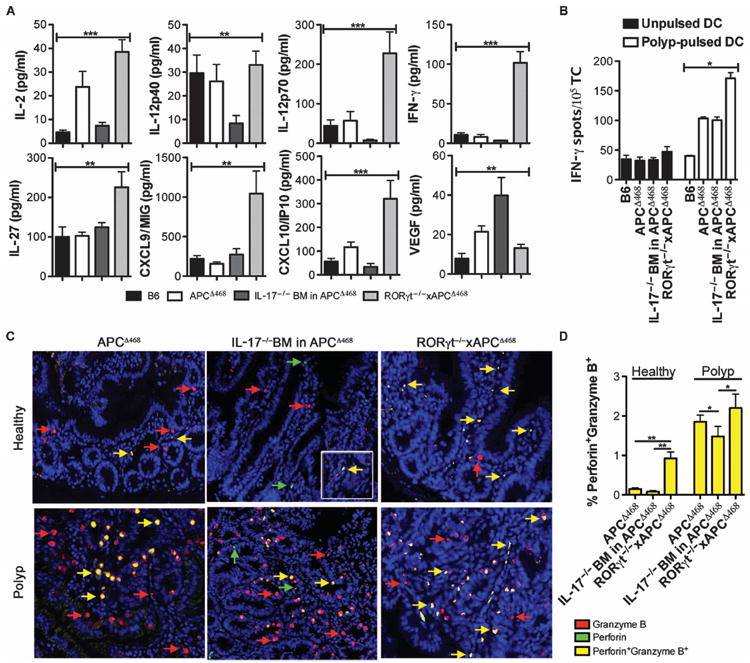Fig. 8.

Protective inflammation and antitumor immunity is enhanced upon loss of RORγt in polyp-prone mice. (A) Amount of serum cytokines and chemokines from wild-type B6, APCΔ468, IL-17−/−BM in APCΔ468, and RORγt−/−xAPCΔ468 mice as determined by multiplex ELISA. Sera from five mice were each tested in duplicate. (B) Improved polyp-specific T cell response assayed by IFN-γ ELISPOT. B6 dendritic cells (DCs) were pulsed with polyp lysate from APCΔ468 mice as a source of tumor-associated antigens. Loaded DCs were then used to stimulate spleen-derived CD3+ T cells of either APCΔ468, IL-17−/− BM in APCΔ468, or RORγt−/−xAPCΔ468 mice. T cells from wild-type B6 spleen were used as a control. T cells were also tested on unpulsed DCs to verify that the response was tumor antigen–specific. Black bars, unpulsed DCs; white bars, pulsed DCs. (C) Representative immunofluorescence images of paraffin-embedded sections from APCΔ468, APCΔ468 reconstituted with IL-17−/− BM, or RORγt−/−xAPCΔ468 mice stained for perforin (red), granzyme B (green), and 4’,6-diamidino-2-phenylindole (DAPI) (blue); yellow arrow depicts granzyme B+perforin+ cells. Double-positive cells in healthy tissue of IL-17−/− BM APCΔ468 are rare, but inset depicts that they are present. (D) Compiled frequencies of granzyme B+perforin+ cells (yellow) among total cells within a 200× field of view; n = 3 mice. Mean and SEM are depicted. Statistics are found in table S8.
